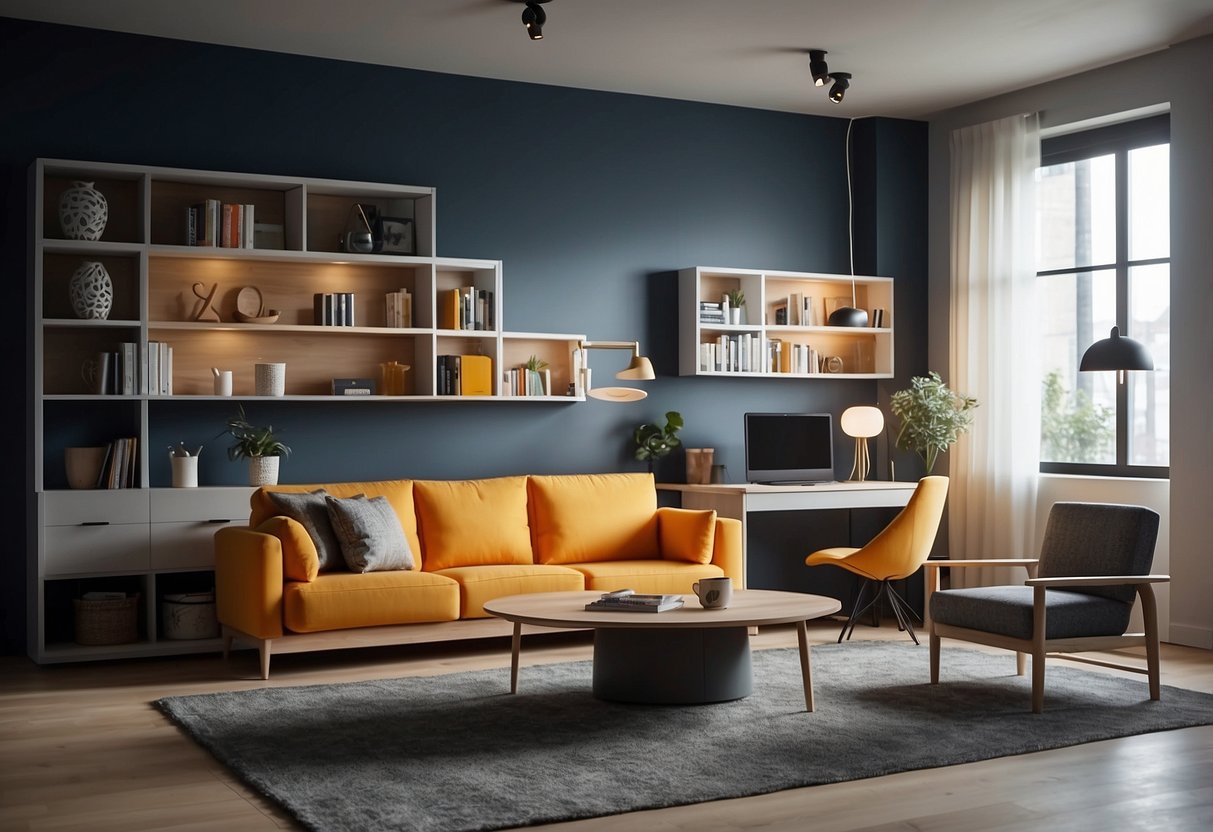How to Decorate a Small Space: Transform Your Home Efficiently
Mirror Placement for Depth
Mirrors are excellent tools for enhancing the sense of space. Placing a large mirror opposite a window can reflect natural light and make the room feel brighter and bigger. Even a mirror on one end of a narrow hallway can create an illusion of added length and space.
Using mirrors on closet doors or as part of decorative pieces can also contribute to a room’s depth without occupying extra space. Grouping several smaller mirrors together can add a unique design element while distributing light throughout the room.
It is essential to avoid cluttering the area around mirrors. Keeping the surrounding space minimal ensures that the mirrors can do their job effectively. By strategically positioning mirrors, small spaces can become both more functional and aesthetically pleasing.
Clever Storage Solutions

Maximizing storage in a small space often requires creativity and thoughtful planning. From utilizing concealed storage options to maintaining a clutter-free environment, there are numerous strategies to efficiently use limited space.
Hidden Storage Ideas
Hidden storage can significantly enhance the functionality of a small room. Furniture pieces like ottomans or beds with built-in storage provide extra space to store items out of sight. Shelving units with closed cabinets can hide clutter while maintaining a clean look.
Under-bed storage is another efficient option. Using bins or drawers that slide under the bed allows for storage without taking up additional floor space. Multi-purpose furniture, such as sofas with storage compartments, also helps in keeping rooms tidy and organized.
Using vertical space can be beneficial. Wall-mounted shelves or pegboards can keep items off the floor and within reach. Magnetic strips on walls for kitchen knives or tools help in utilizing every inch of available space.
Decluttering Regularly
Regular decluttering is vital in small spaces to prevent overcrowding. It is essential to periodically assess belongings and identify unnecessary items that can be donated, sold, or discarded. Keeping only essential items can significantly free up space.
Organizing remaining items into categories and storing them accordingly helps maintain order. Utilizing transparent containers or labeled boxes ensures that items are easily accessible. Seasonal items can be stored away when not in use to ensure everyday items have enough space.
Rotating items based on usage frequency is also effective. Frequently used items should be conveniently located, while less frequently used ones can be stored in harder-to-reach places. This approach ensures that space is consistently optimized for daily living.
Lighting to Enhance Space
Effective lighting can make a small space feel larger and more inviting. By layering different types of lighting and maximizing natural light, you can enhance the overall ambiance and functionality.
Layered Lighting
Layered lighting involves combining various light sources at different levels to create depth and dimension. This can include ambient lighting for overall illumination, task lighting for specific activities, and accent lighting to highlight particular features.
Ambient lighting can be achieved with ceiling lights or wall-mounted fixtures that provide general illumination. Task lighting, such as desk lamps or under-cabinet lights, is essential in areas where precision tasks are performed. Accent lighting, like spotlights or LED strips, can draw attention to artwork, shelving, or architectural details.
Using a mix of these light sources allows for flexibility and control over the mood and functionality of the space. Dimmer switches can also be added to adjust the intensity of the lighting as needed.



